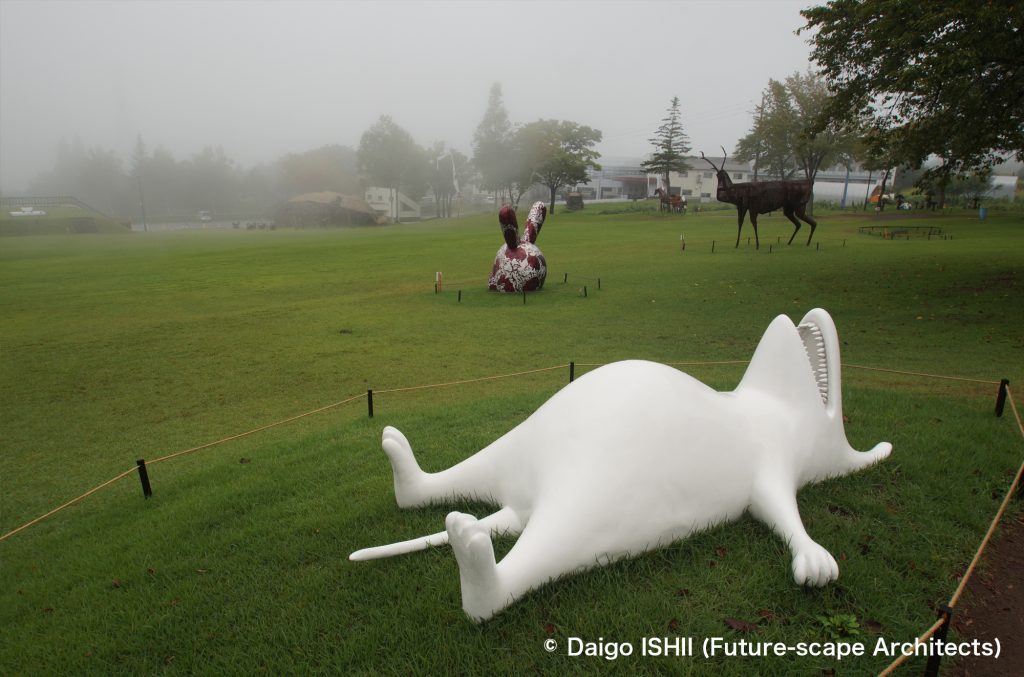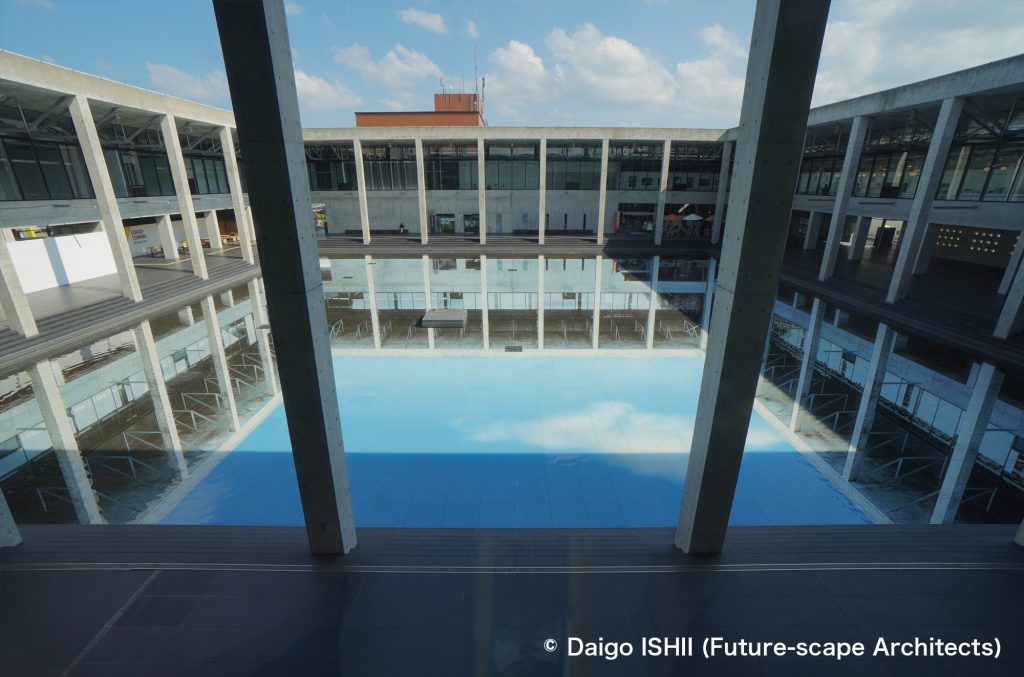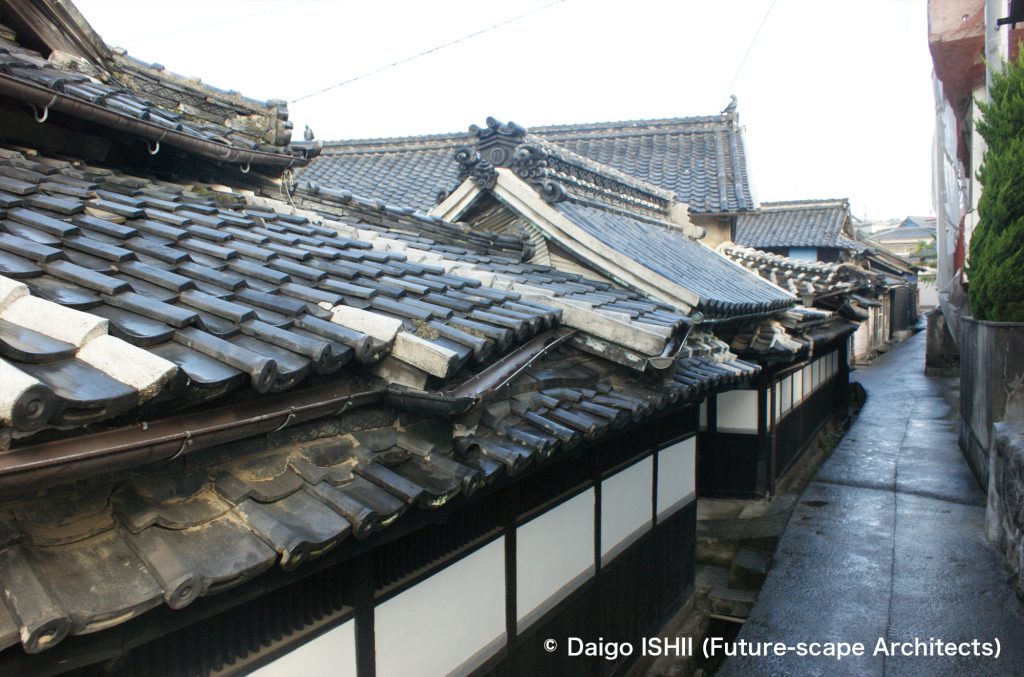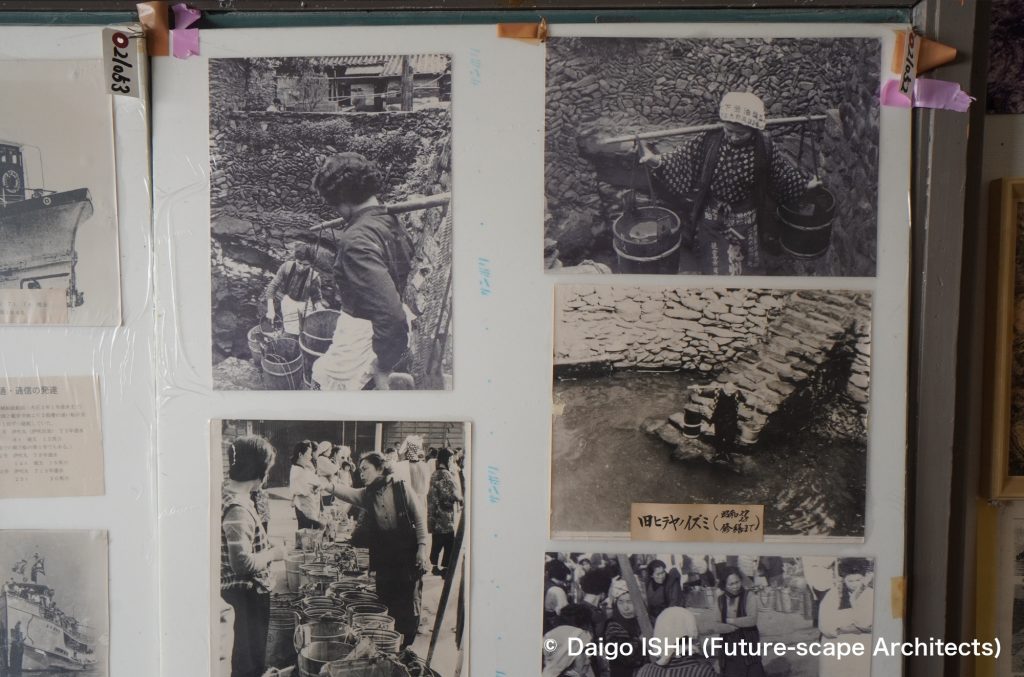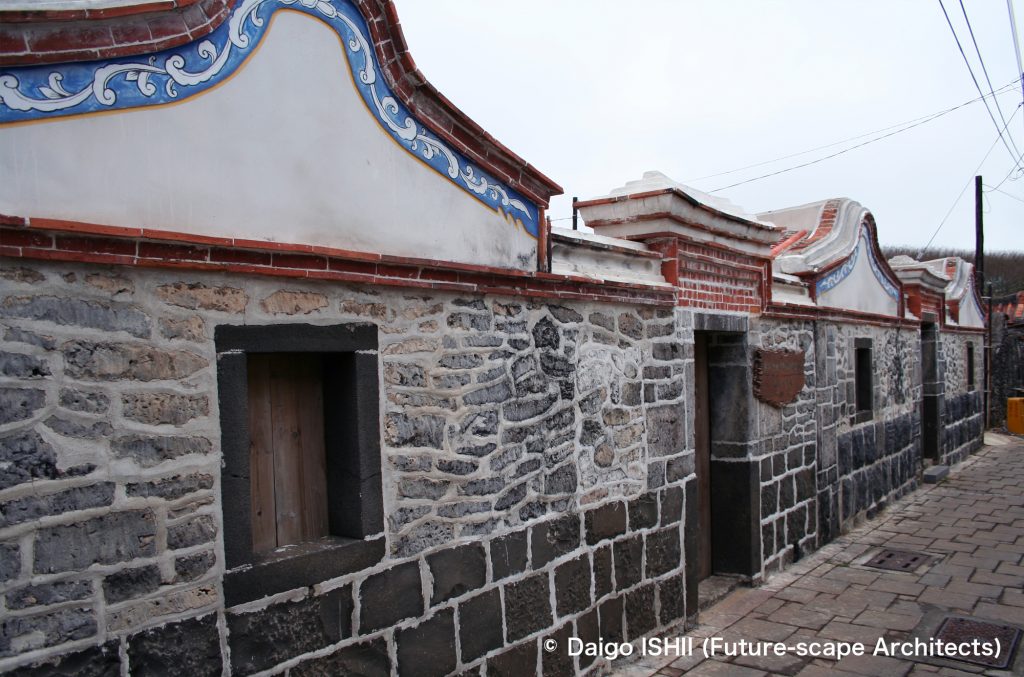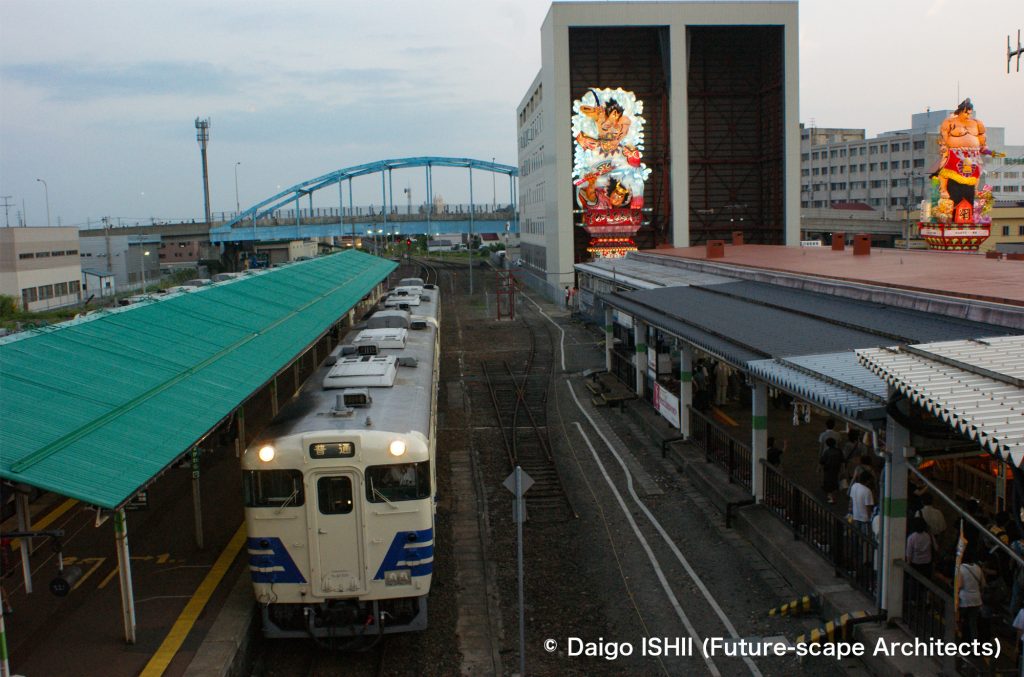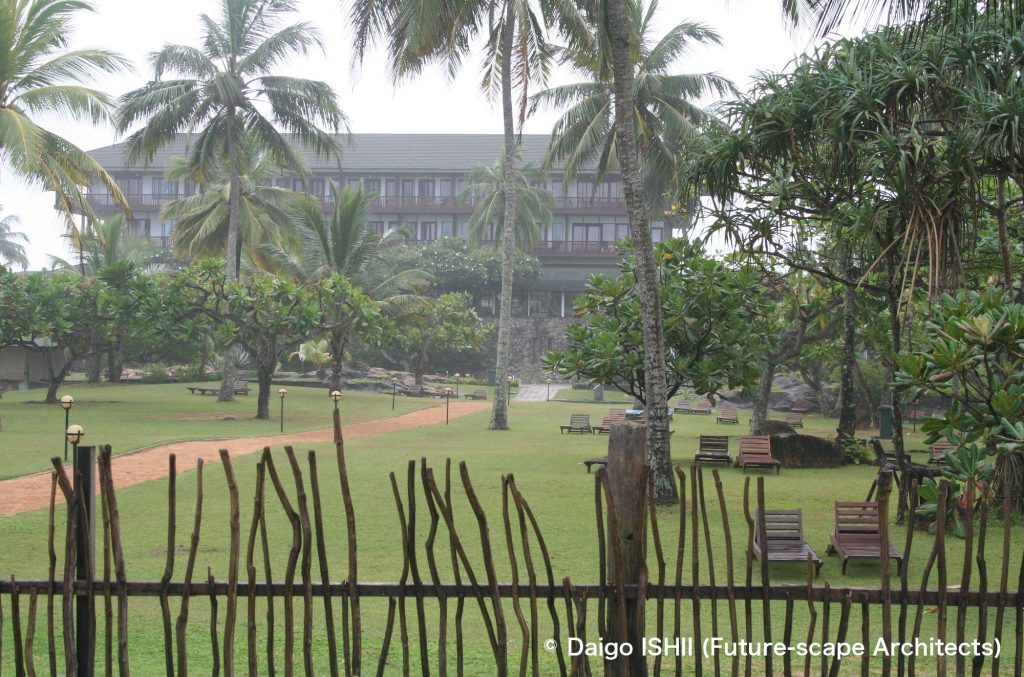東日本では、「いりこ」と聞いても、ピンと来ないか、煮干しの西日本版ぐらいの認識ですが、その最高級品を産するのが伊吹島。漁場がすぐ近くにあり、獲ってから短時間で、鮮度の高いまま加工できるためです。だから、上方の関西の高級料亭で出汁を取る「いりこ」は、伊吹島産が定番。
Ibukijima island produces the highest class of “Iriko (dried Japanese anchovy),” which is the material for making broth. That is because the fishing grounds are nearby, and anchovies can be processed in a short period of time after being caught while still being very fresh. So Iriko produced on Ibukijima Island is the standard in high-end restaurants in the Western Japan.

See Ibukijima Island and a ship for Japanese anchovy fishery.
小さな島ですが、「いりこ」の恵みによる島全体の売上が、多い年で20億円、少ない年で8億円で、最高は1980年の40億円。十数軒の網元が、島民や島外の人を雇って漁を行いますが、売上を網元、労働者、経費に3等分する不文律があるため、売上が上がれば、給料も上がる仕組み。最盛期には月給100万円を超え、家族総出で網元の下で働くと、1年で家が建ったほど。島民が、島や本土に何軒も家を所有しているのもそれ故。昔は、冬まで続いた「いりこ漁」も、漁獲資源保護から、今は6月から9月までとなり、短い漁期や温暖化の影響で売上が落ちましたが、2022年は、他地域の不漁の影響で、伊吹島産の取引価格は急上昇し、20年振りの売上となりました。
漁の出航は、6、7月が朝5時半、8月からが6時。時刻になると同時に、明けたばかりの海を、船が一斉に出航します。
漁網の形が、二股に分かれた股引き(バッチ)に似ているため、パッチ網漁と呼びます。2隻が対になり、漁場に着くと、二股の網の先に取り付けたワイヤーを持って、2隻の船が、100~200メートルぐらい離れて行きます。2隻の間の海に広げた網を、太陽に向かって泳ぐ魚の群れとは逆方向に、ゆっくりと船を動かして移動させると、網に魚が入る仕組み。30分ほどで2隻は合体し、網を引き上げると、ぴちぴちと動き回るカタクチイワシが現れます。この作業を日没近くまで繰り返します。
海上で水揚げしたカタクチイワシは、高速運搬船で加工場のある島へ輸送。船からホースで魚を吸い上げ、セイロに仕分けすると、4,5分釜茹でし、その後、乾燥室で、サイズにより3~12時間乾燥させて完成。すぐに、対岸の観音寺港にある伊吹漁協の市場に運び、競りに掛けます。
夏の間、伊吹島は、船上も、加工場も大忙し。島外に出た人が、お盆に里帰りすると、手伝ってくれと声が掛かるため、盆休みだけは、島に戻らなかったと話す方もいました。実入りがいいとは言え、重労働のため誰もがやりたがる仕事でもなかったのです。
いりこは、水に浸け、半日ほど寝かして出汁を取りますが、そのままだと少し雑味があるので、一手間掛けて、頭と内臓を取ると、上品でやさしい出汁となります。と実践していたら、最近、ローカルな素材を使う料亭「てのしま」の亭主が、いりこの頭も内臓も取らず、苦味も含めて、料理に活かしているという記事が出ていました。ほぉーっっっっっ!。
Although the island is small, the total anual sales of Iriko in the island reached at 2 billion Japanese yen in high years, 800 million Japanese yen in low years, and 4 billion Japanese yen in 1980 at the highest. Dozens of fishermen bosses hire locals and people from outside the island. The island has an unwritten rule that sales are divided equally between fishermen boss, workers, and expenses. As sales increase, wages of workers increase. At its peak, the monthly salary exceeded 1 million Japanese yen. That is why the islanders own many houses on the island and on the mainland. When the whole family worked under a fisherman boss, they could built their house by one year labor. In the past, Iriko fishing lasted until winter. Now it is only allowed from June to September due to the protection of fishing resources. Sales have declined due to the short fishing season and the effects of global warming. In 2022, due to the poor catch in other regions, the transaction price of Ibukijima Island soared, resulting in sales for the first time in 20 years.
Fishing ships depart at 5:30 in the morning in June and July and at 6:00 in August. At the same time as the time comes, the ships leave together from the port to the newly dawned sea.
It is called "Patch Net Fishing." Because the shape of the net resembles a bifurcated patch. Two ships are paired. When they arrive at the fishing grounds, they hold the wire attached to the tip of the nets and move about 100 to 200 meters apart. A net spread out in the sea between the two ships is slowly moved in the opposite direction of the school of fish swimming toward the sun, and the fish enter the net. After about 30 minutes, the two ships are combined and pull up the nets. The anchovies scurrying about reveal. They repeat this process until near sunset.
A high-speed carrier transports anchovies landed at sea to the island where the processing plant is located. The fish is sucked up from the ship with a hose, sorted into baskets, boiled for 4-5 minutes, and dried in a drying room for 3-12 hours depending on size. As soon as Iriko production finishes, other ship takes to the fish market that the Ibuki Fishery Cooperative owns in Kanonji Port on the mainland to put up for auction.
In the summer, Ibukijima is very busy on the ship and at the processing plant. Some natives, who worked outside the island, said that they didn't return to the island during the Bon festival (the traditional summer ceremony to visit their ancestors tombs) because they were called out for help as soon as they returned to their homes. Iriko fishing was a lucrative work. However, everyone didn't necessarily want to do because it was hard work.
The dried Japanese anchovies (Iriko) are soaked in water and rest for about half a day to make broth. It will have a slight bitter taste, so it is better to take the time to remove the head and internal organs to make an elegant and gentle broth. I am practicing that, but, in a recent newspaper article, the owner of a top-class Japanese restaurant who used local ingredients talked that he did not remove the heads or internal organs of Iriko to create complicated taste with bitterness in his cooking. Whoops!.
いりこ漁 / Japanese anchovy fishery
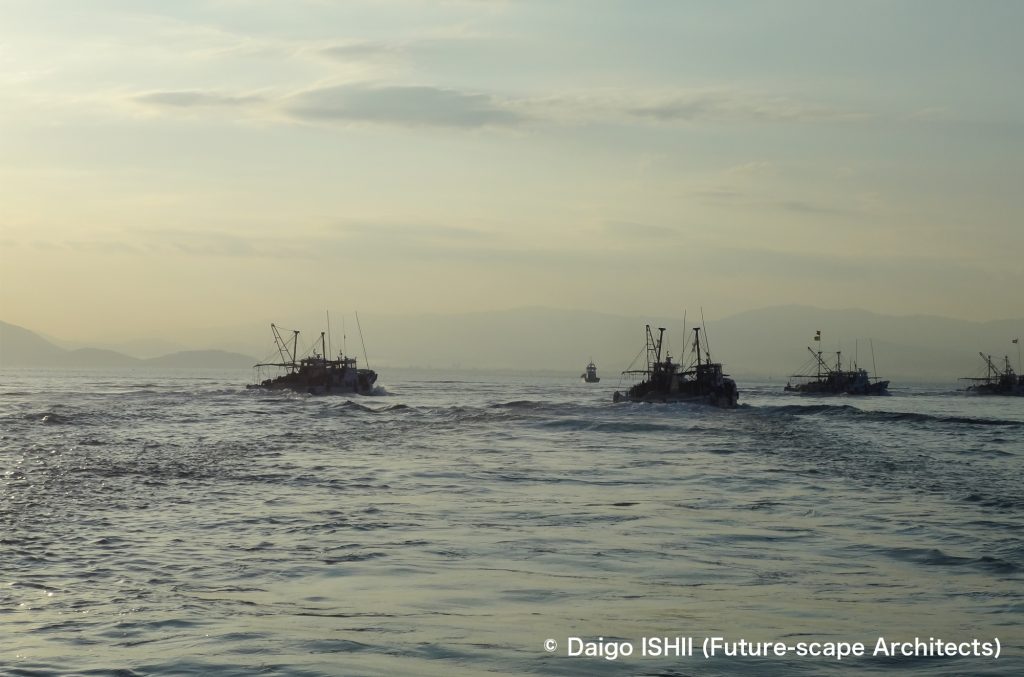
See ships for Japanese anchovy fishery departing from the port of Ibukijima island in early morning.
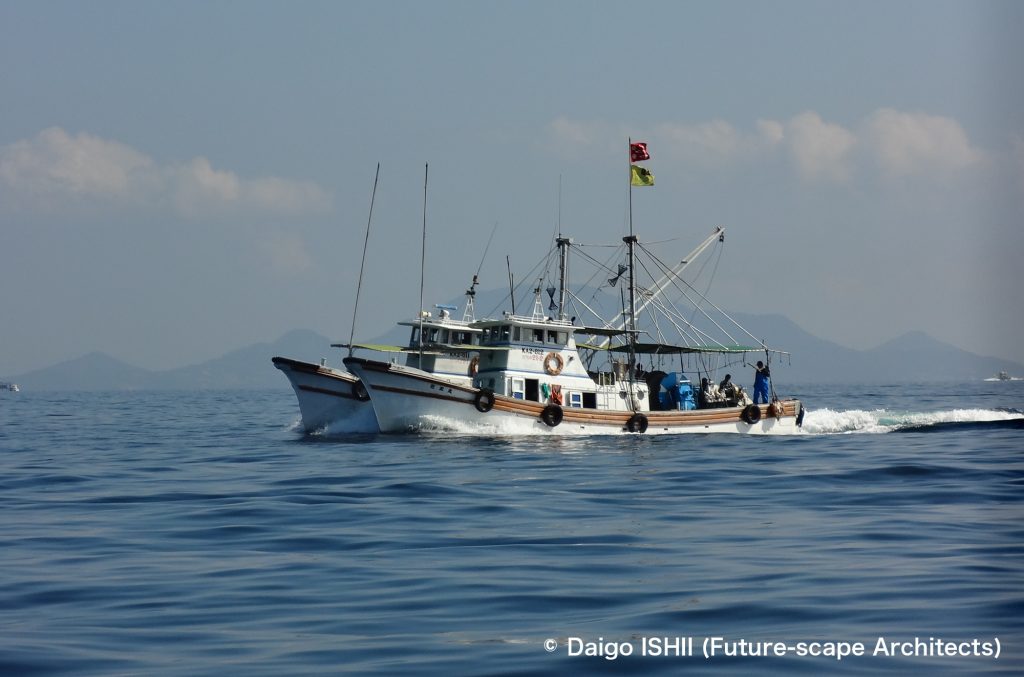
The ships for Japanese anchovy fishery are carried out in units of two ships, so the two ships are combined and headed for the fishing grounds.
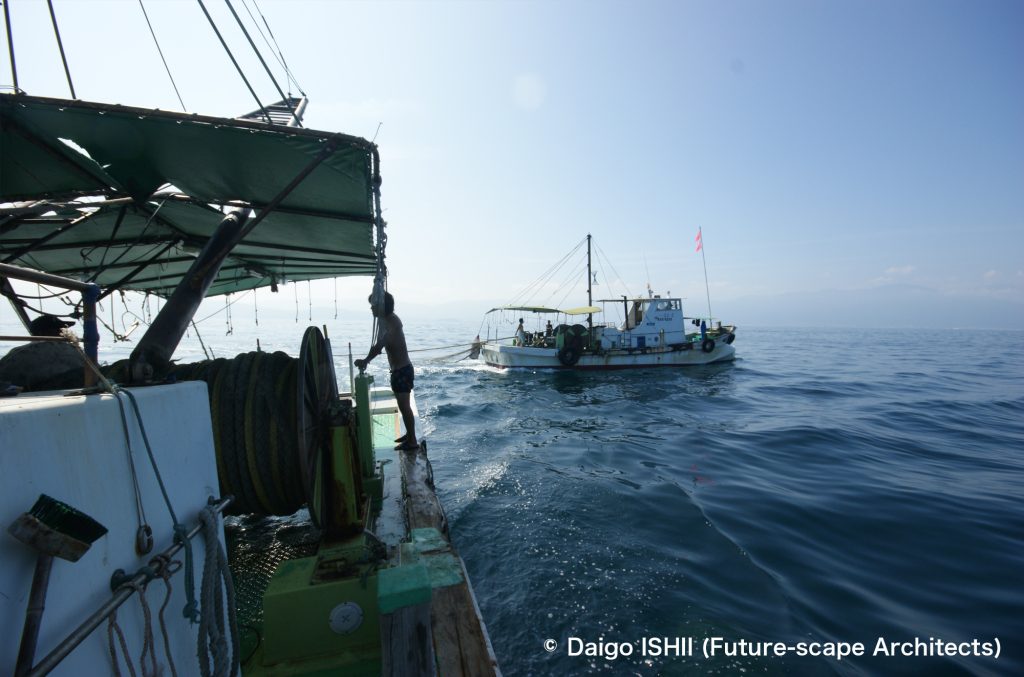
When two ships arrive at the fishing grounds, they hold the wire attached to each tip of the nets with the shape of a bifurcated patch and move about 100 to 200 meters apart.

After about 30 minutes, the two ships are combined again and pull up the nets.
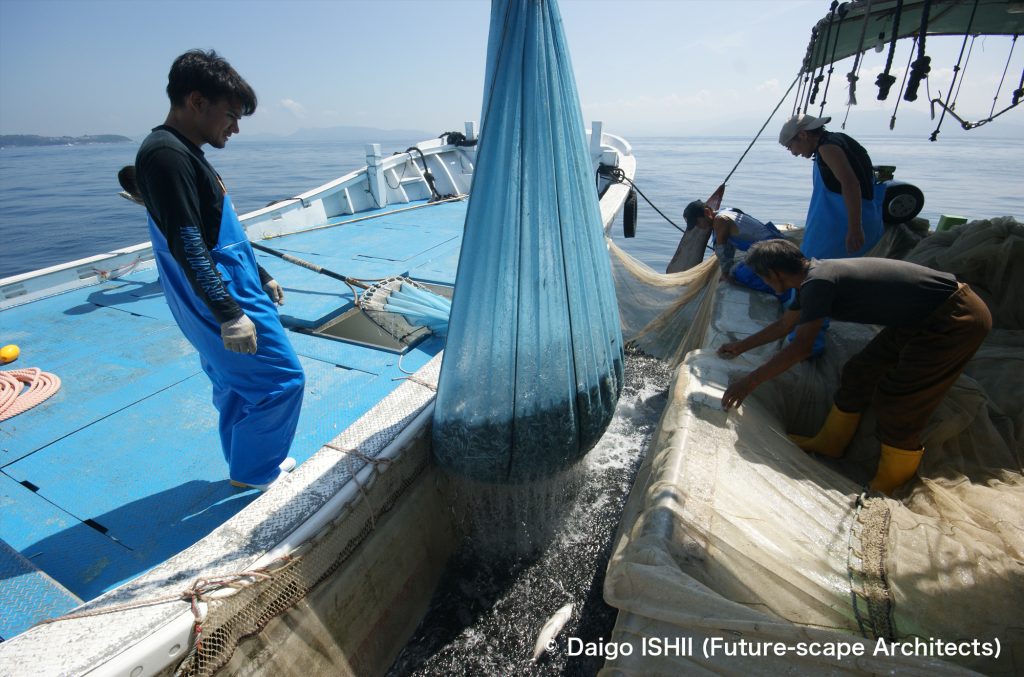
The fishermen moves Japanese anchovies that was just fished to a high-speed boat heading to the island's processing plant.
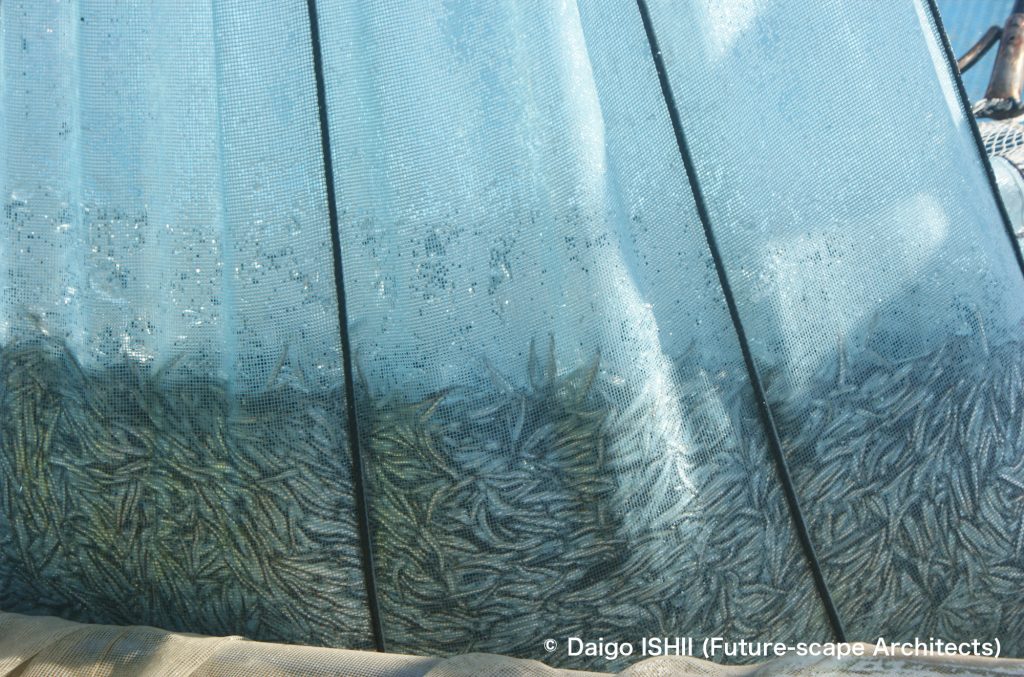
See Japanese anchovies that was just fished。
加工 / Processing
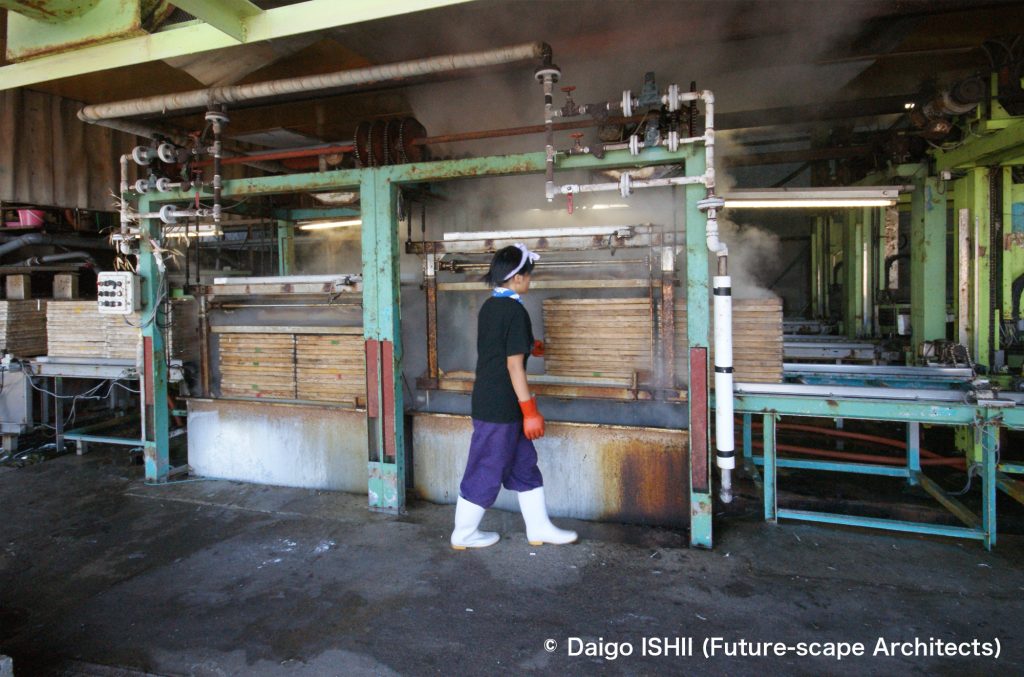
At the processing plant, the anchovies are transferred to steaming wooden baskets and placed on automated lanes for automatic boiling.

See freshly boiled Japanese anchovies.
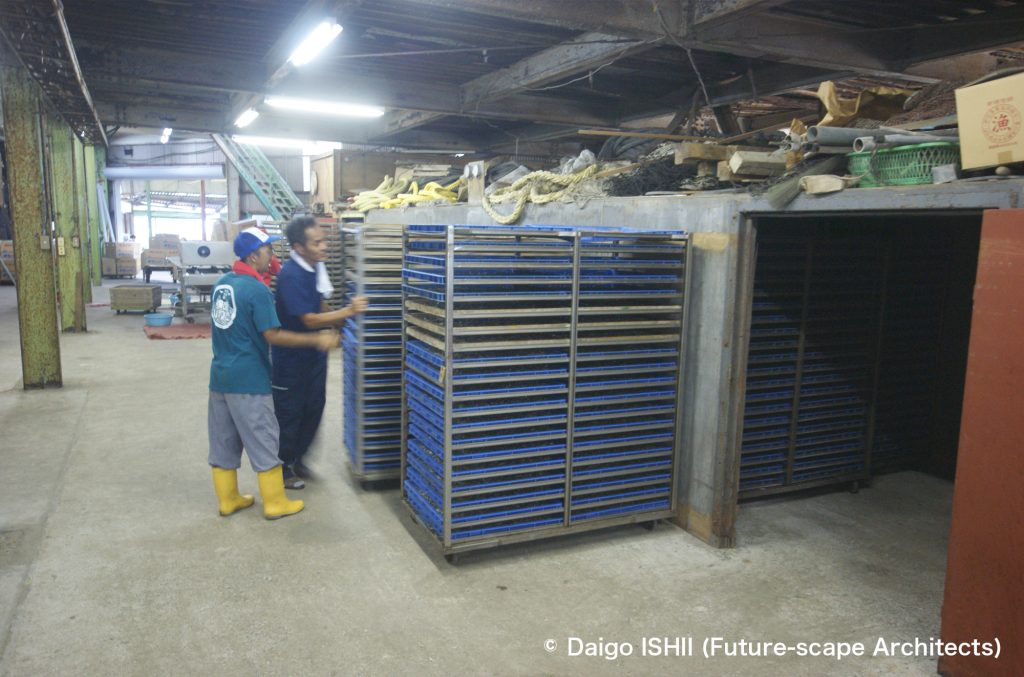
The low room on the right is the drying room, where metal racks with steam baskets are put in to dry.

The dried Japanese anchovies are sent down the lane, and after removing the defective products, they are put into boxes.
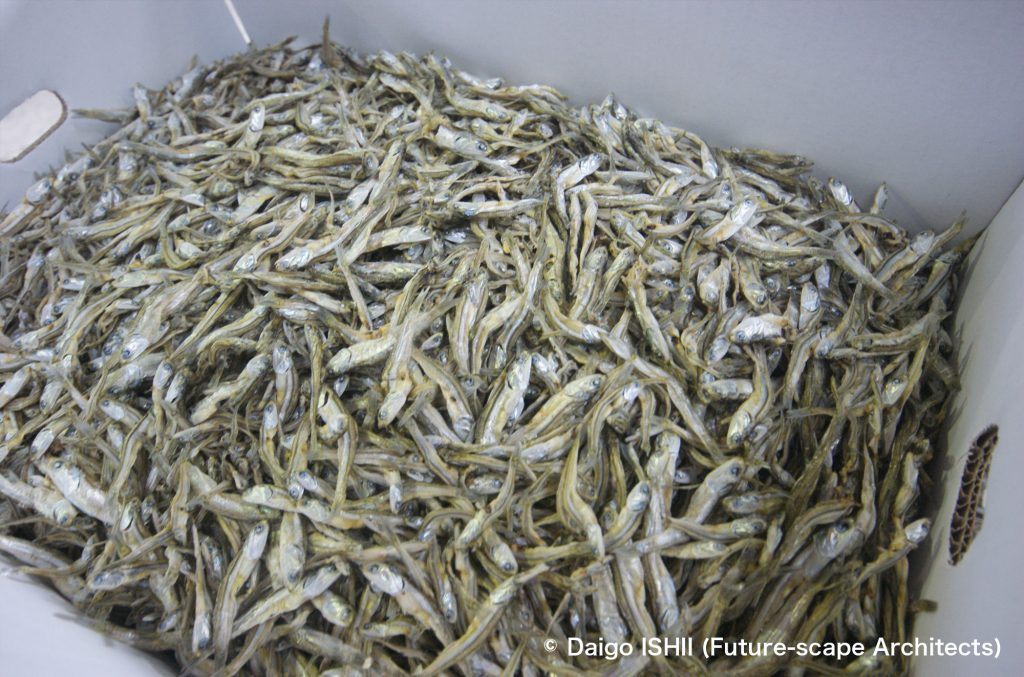
See a box in which dried Japanese anchovies are packed.
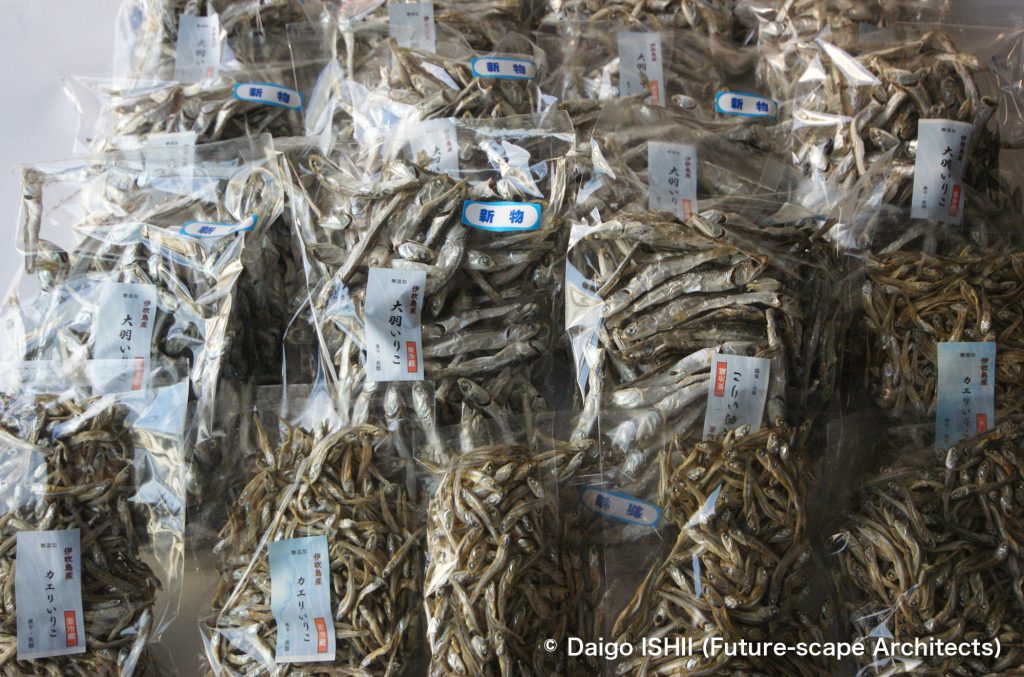
See dried Japanese anchovies bagged for retail. Oba type in the center is a high quality product that makes the most delicious broth.
加工場の景観 / Landscape of Japanese anchovies processing plants
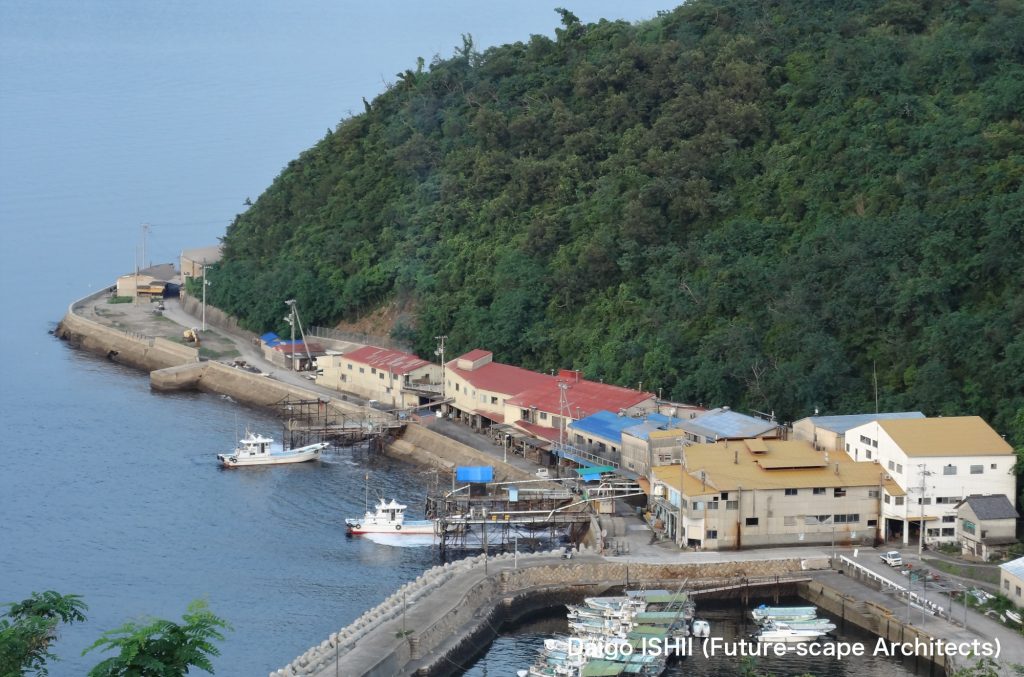
For 1.2 kilometers along the shore, more than a dozen fishermen's boss have their dried Japanese anchovies processing plants. In contrast to the scenic landscape in the center of the village, most of the buildings are finished with corrugated cement slate and have an external shape determined by function, creating an irresistible scenery for factory moe (geek).

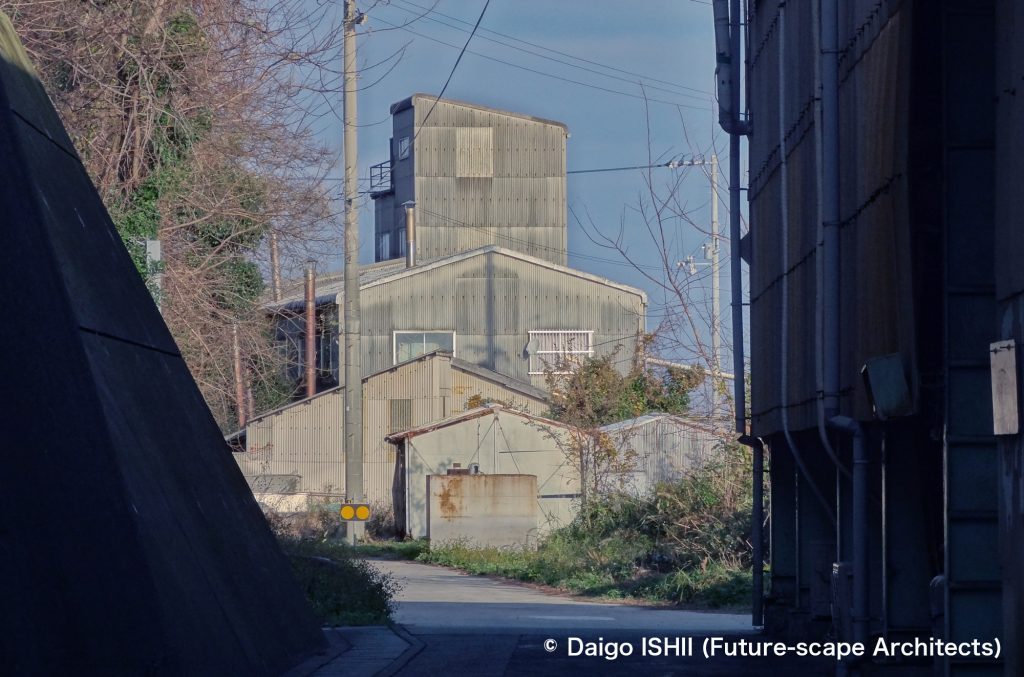

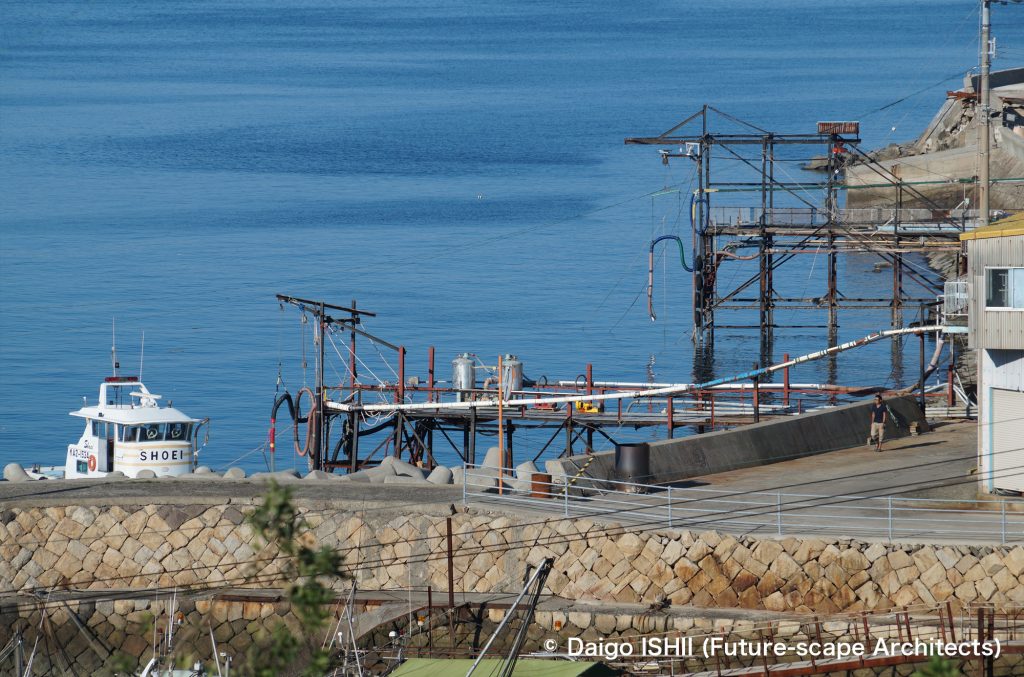
いりこ飯 / Iriko-meshi rice
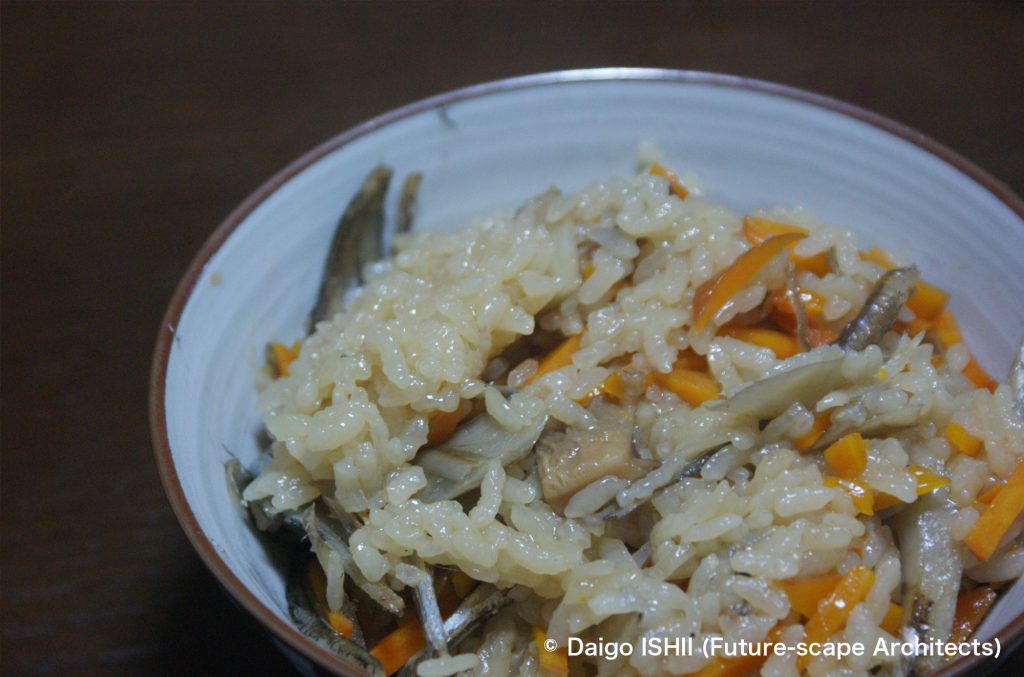
See Iriko-meshi rice cooked in dried Japanese anchovies broth. Islanders almost cook without ingredients but, in this one, carrots, burdock root, fried tofu, etc. are added. It is the specialty of Ibukijima island with excellent taste.
Japanese anchovies fishery Part 1.
Japanese anchovies fishery Part 2.
ご感想はこちらへ / Click here for your impressions
参考文献 / reference
"伊吹島の民俗 : 香川県観音寺市伊吹町 : 特集号"(香川民俗学会,1991)
伊吹島民俗資料館
"苦味、命の恵み"(日本経済新聞2023年4月30日朝刊,日本経済新聞社,2023)
写真の無断使用、転用はご遠慮下さい。/ Please do not use or upload our photos without permission.
